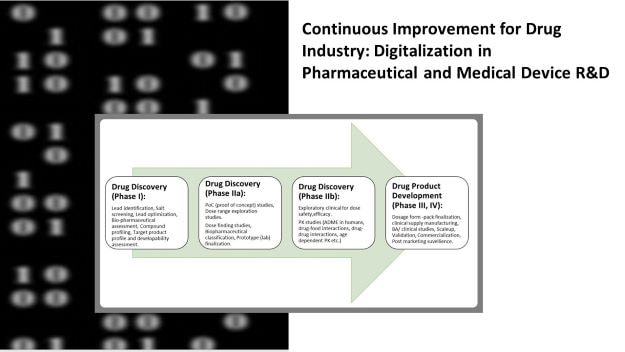The series so far- Part 1 of this series introduced digitalization in pharma and medical device R&D, Part 2 discussed the need for digitalization, Part 3 mentioned- How to go for digitalization in R&D, Part 4 discussed advantages of digitalization, Part 5 elaborated on digitalization in various phases of drug research and development, Part 6 highlighted selecting the right R&D digitalization platform, while Part 7 highlighted six building blocks for digital transformation in pharmaceutical and medical device R&D.
Continuing further with the series, in this blogpost, I shall briefly touch upon- How to transform an existing R&D setup to a digitalized R&D.
At the outset, define success metrics.
Defining success metrics is a must for any continuous improvement initiative, same goes for digitalization.
Here are top 6 broad markers of digital progress-
- Return on digital investments.
- Percentage of annual technology budget spent on digital initiatives within the organization.
- Success with minimizing time to market new products i.e. are you getting ahead of your competition?
- Percentage of leader’s incentives linked to digital initiatives.
- Top technical talent reskilled, recruited and retained.
- Customer feedback.
Digital is simple, right? Not quite. The million-dollar question is: where to start?
Transiting from existing R&D setup to a digitalized R&D-
I shall discuss some avenues to trigger your R&D digital transformation in order to stay relevant in the near future.
Pessimism, cynicism, reluctance, disbelief, doubt, legacy systems, rusty processes and change rebels are just a few hurdles Continuous Improvement and R&D leaders will have to overcome in quest for R&D digitalization.
If one were to analyze various digital transformation success stories, all of them share one point in common: Resilience. Those digital transformation campaigns succeeded by pulling champions together to distil the essence and power of digital in their own business function or a pilot function to build on the ‘quick wins’. Digital champions owning individual pilots then catalyzed the overall digital transformation across the organization.
Before pursuing digital opportunities, Continuous Improvement and R&D leaders must first develop and align on a digital vision for their organization, by looking at both the overall digital strategy and value proposition for their companies. They should begin by assessing their organizational capabilities, estimate the required resources, and contemplate potential partnerships that could help them achieve their goals.
The basic question underlying all strategic plans is: How can digital help us transform core business processes or generate new opportunities?
Transformation to digitalization begins with- Vision, followed by value stream mapping, process mapping, product life cycle mapping, new product strategy mapping, VOC (voice of customer) survey, selecting the most- appropriate R&D digitalization platform, digital strategy roadmap and managing change.
R&D digitalization is just the beginning.
Digitalization is a continuous improvement process. Therefore, organizations must keep pace with advances in digitalization technology, along with advances in pharmaceutical sciences, market dynamics and more importantly changing patient needs.
In the next part of this series- Part 9, I shall highlight tips, quick wins for digitalization in pharmaceutical and medical device R&Ds.
Meanwhile, note that there are fifteen different Continuous Improvement pathways for pharmaceutical and medical device R&Ds. Are you planning a Continuous Improvement initiative for your R&D division?
Related reading:
#continuousimprovement #digitalization #digitalizationinpharmaceuticalindustry #markersofdigitalization





















